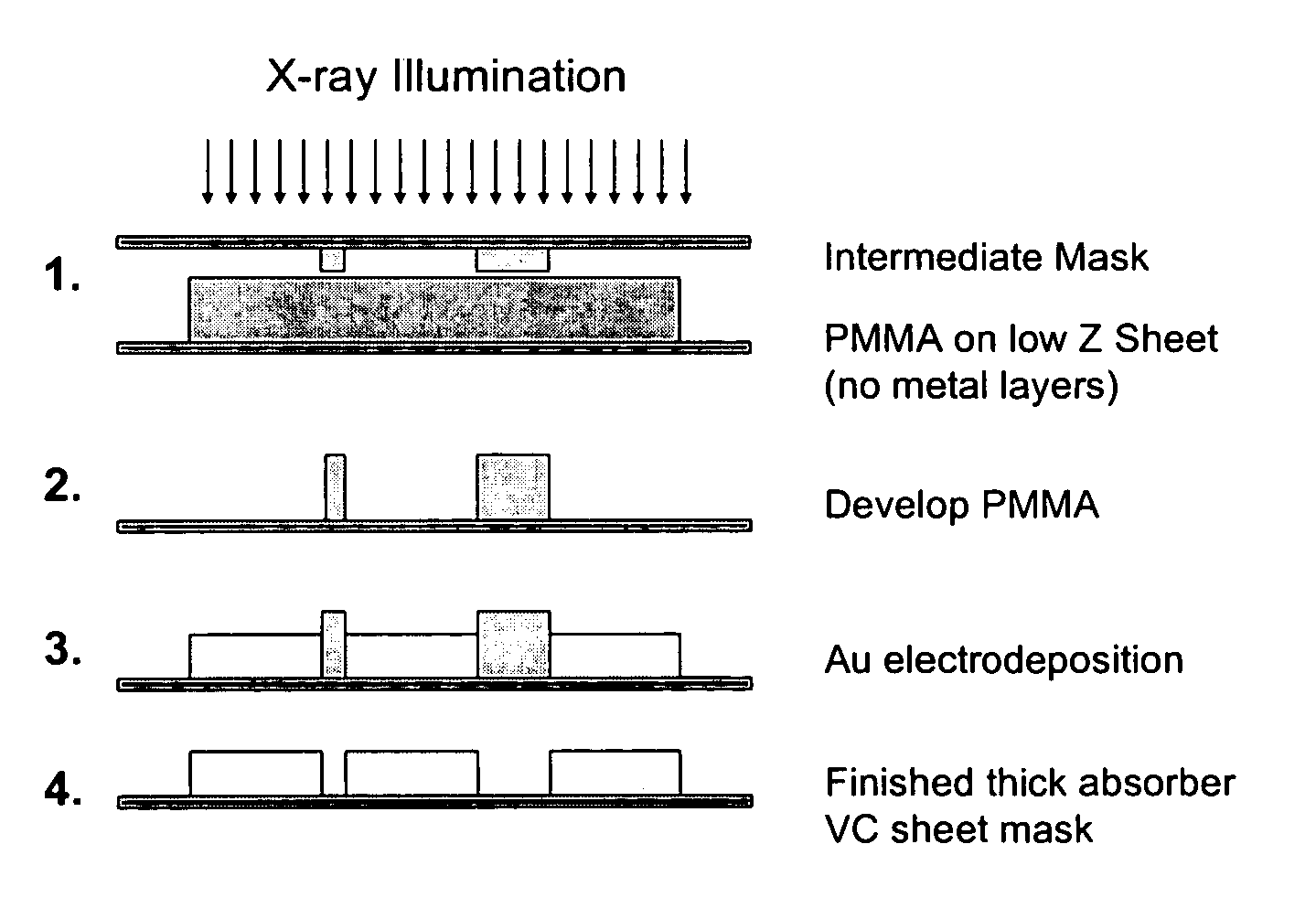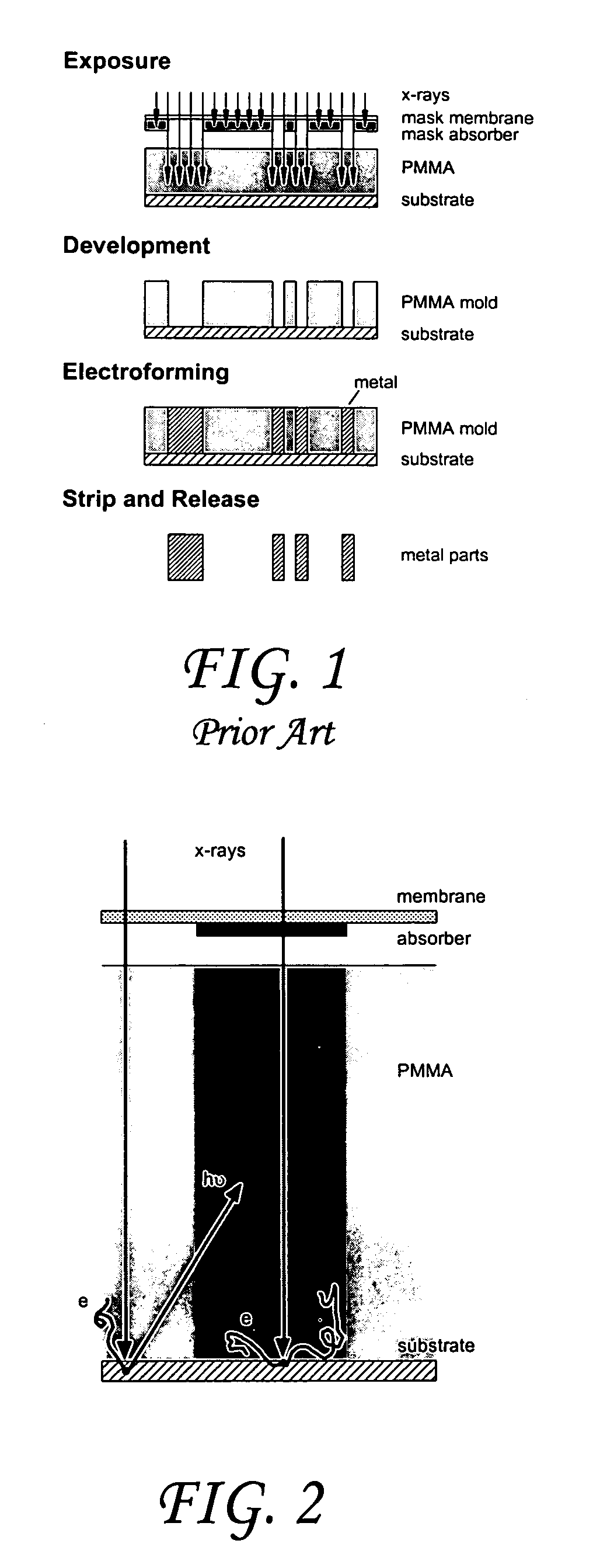Vitreous carbon mask substrate for X-ray lithography
a technology of x-ray lithography and carbon mask, applied in the field of x-ray lithography mask making, can solve the problems of poor metal adhesion to the carbon for electrodeposited nickel, copper and gold, and the substrate is not suitable for use, and achieves low x-ray cross section, good image resolution and contrast, and low fluorescence yield.
- Summary
- Abstract
- Description
- Claims
- Application Information
AI Technical Summary
Benefits of technology
Problems solved by technology
Method used
Image
Examples
Embodiment Construction
[0032]In an effort to reduce X-ray absorption in the mask substrate, a substrate with low atomic number (hereinafter referred to as a “low Z” material) is preferred. Low Z materials commonly used as substrate sheets are beryllium and graphite. In addition, aluminum has been described as a useful substrate material for providing a LIGA mold.
[0033]Each of these materials is, however, problematic. Beryllium is toxic, expensive, and exhibits poor surface adhesion characteristics for typical absorber materials. Graphite is porous, which leads to problems in applying a suitable resist and to problems with increased roughness in the sidewalls of the exposed / developed resist which we believe is due to small angle X-ray scattering and uneven dose deposition caused by the porosity and crystallinity of the graphite. Lastly, because aluminum has more than twice the atomic number of either beryllium or graphite, its use as an X-ray mask is limited due to its high X-ray cross-section, i.e., an al...
PUM
| Property | Measurement | Unit |
|---|---|---|
| thick | aaaaa | aaaaa |
| feature size | aaaaa | aaaaa |
| thick | aaaaa | aaaaa |
Abstract
Description
Claims
Application Information
 Login to View More
Login to View More - R&D
- Intellectual Property
- Life Sciences
- Materials
- Tech Scout
- Unparalleled Data Quality
- Higher Quality Content
- 60% Fewer Hallucinations
Browse by: Latest US Patents, China's latest patents, Technical Efficacy Thesaurus, Application Domain, Technology Topic, Popular Technical Reports.
© 2025 PatSnap. All rights reserved.Legal|Privacy policy|Modern Slavery Act Transparency Statement|Sitemap|About US| Contact US: help@patsnap.com



